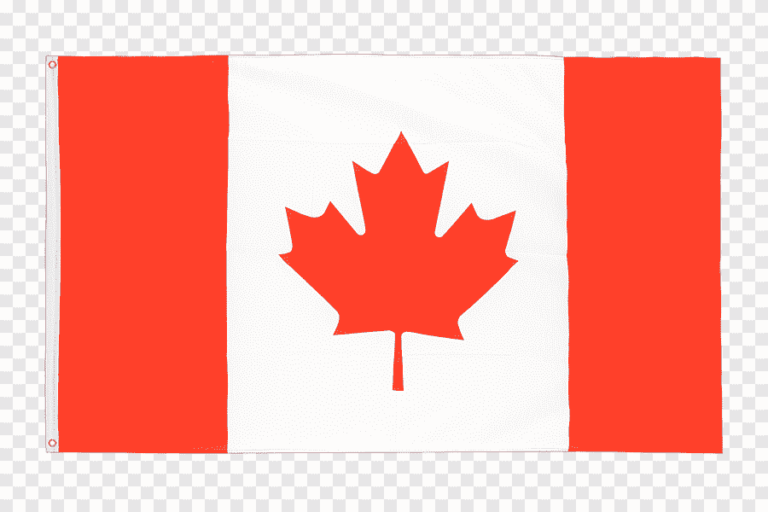The Māori History…
How the Kīngitanga movement impacted and shaped te ao Māori.

This essay introduces Kīngitanga (Māori King movement) which was established in the 1850s and is still prominent in Māori society today. Kīngitanga was originally formed when Mātene Te Whiwhi and Tāmihana Te Rauparaha sought out a chief to become king due to Pākehā forcing treaties, ordering whenua (land) confiscations and taking control of Māori affairs (Papa & Meredith 2012). Although Māori society revolved around social structures such as hapū (sub-tribe) and iwi (tribe) which show a balance and distribution of mana (authority), the Kīngitanga presented a monarch for people to unify in political and social power against Pākehā and would spark the beginning of a dynasty that is ongoing to this day (Monarchy New Zealand 2021). Three key themes will be analysed to gain an understanding of how Kīngitanga impacted and shaped te ao Māori today and are shown using three primary issues and three corresponding impacts. I will start by discussing the primary issue of how the increase in whenua sales impacted hapū and iwi resulting in the creation of Kīngitanga and then another issue on how conflict escalated resulting in war that aimed to destroy the movement. The final issue I will discuss is how Kīngitanga had to regain their mana by pursuing different methods such as organising a parliament to coexist with the colonial government and maintain personal affairs. Kīngitanga was and still is an important movement to Māori today as many still reflect on how important it was as part of history and how it has shaped current society too.
above image source-https://cdn-images-1.medium.com/max/807/1*p8rzwAATe5J4IowQBMyBpA.jpeg
This paragraph will discuss how the arrival of Pākehā has led to an increase in the sales of whenua which impacted both hapū and iwi. This theme is important to this essay as it allows us to understand why Kīngitanga was created. Whenua has a high significance to Māori as they see it as tapu (sacred, set apart) and it contains whakapapa (genealogy) which represents an important principle in te ao Māori (Paterson 2018:407). The deep relationship between Māori and whenua is derived from a spiritual, mental and physical connection that relates to the origins of atua (ancestor, spirit being) and Papatūānuku (mother earth). Due to the importance of whenua to Māori, the arrival of Pākeha was yet to set off a series of conflicts regarding whenua and ownership of the land. Māori began to feel more and more reluctant to sell their whenua because of various reasons, both culturally and financially, which made them dislike Pākeha from the mid-1850s and onwards. These reasons included the disrespect and racism Māori received from Pākeha, arguments that occurred between the Māori and the Pākeha neighbouring houses, adapting to the way Pākeha handled disagreements such as getting the colonial government involved. This differed from Māori as they relied on rangatiratanga which is highly important to them culturally and socially. Although whenua had more significance culturally than financially, Māori still earned financial compensation by selling land. However, this financial compensation was spread amongst many people and therefore quickly ran out which was another reason Māori disliked Pākeha (Paterson 2018:417). These were only some of the reasons that led Māori to create Kīngitanga; because of how Pākeha were negatively affecting hapū, iwi and te ao Māori as a whole. Selling whenua had many impacts on te ao Māori and as whenua is tapu to Māori, it created a huge conflict between Pākeha and Māori especially when Māori were unwilling to sell their whenua. Due to this unwillingness, Pākeha sought to purchase whenua in more illicit ways such as trading and purchasing from Māori chiefs discretely or if many were thoroughly against selling, it often led to conflict such war. An example of how selling whenua has impacted te ao Māori is how around 1,404,700 acres of Ngāti Kahungunu whenua were purchased by Pākehā in 1859. Eventually, more and more whenua would be sold and even though there were attempts to recover Māori land, within 40 years Ngāti Kahungunu hapū had lost all their whenua (Whaanga 2017). Hēnare Matua, chief of Ngāti Kahungunu in the 1860sa, had been involved in selling whenua, however later opposed it. Matua was also involved in many movements to claim back the whenua that Pākeha had purchased without the acts of violence, but was unsuccessful as it was challenging and would often end in conflict (Ministry of Culture and Heritage, 2021a).
This paragraph will discuss the theme of how the conflict between Pākehā and Māori escalated from whenua sales to wars. This theme is important to this essay as it demonstrates how the colonial government attempted to destroy the Kīngitanga movement which led to devastating impacts on te ao Māori. The conflict between Pākehā and Māori arose from selling whenua to war due to how the colonial government responded to the Kīngitanga movement and their reluctance towards Pākeha. The colonial government was determined to diminish Kīngitanga by appointing George Grey, who had connections to iwi chiefs and ended the Northern War. Grey sought war as a way to undermine the movement which resulted in the invasion of Waikato as well as many wars preceding and following that. This provides an understanding as to how the conflict led to an attempt to destroy the movement as Kīngitanga had been established in Waikato and united Māori as a whole therefore has deep significance to them. The Waikato war is an example of this, as Kīngitanga was defeated once they were met with colonial government forces (Ministry for Culture and Heritage 2021c). There were many casualties as a result of the war and soon the white flag was raised by Māori which was considered a sign of surrender to Pākeha, thus Tāwhiao and his supporters were forced to retreat. Due to this, Kīngitanga had less mana which the colonial government took as an advantage and soon after, multiple wars followed consecutively to further diminish the movement such as the Battle of Ōrākau in 1864 and the Taranaki War in 1860 (which ultimately initiated the upcoming series of war). How Māori were affected during and after the war show how the colonial government’s attempt to destroy Kīngitanga impacted te ao Māori. The war had affected living conditions for Māori and many were selling whenua as a result of desperation and struggle even though the Kīngitanga had maintained firm support from many iwi and it was highly opposing to do so. In 1869, Tāwhiao expressed how Pākeha and Māori should remain separate to avoid political and social collisions in an attempt of peace, as war had already affected so many on both sides as well as put an end to killing (Papa & Meredith 2012). The consequences from this event have affected Māori cultural identity in ways such as loss of mana in terms of their whenua which held great significance (Paterson 2018:413-416).
This paragraph will discuss the theme which is how Kīngitanga attempted to gain back their mana through forms of utu (reciprocity). This theme is important to the essay as it shows the attempts made by Kīngitanga on behalf of Māori as a way of asking for harmony and respect. The delegation led by Tāwhiao in order to petition for an independent Parliament for Māori so they could control their own affairs was a key attempt to gain back their mana. Mana is an important principle and contributes to tikanga Māori (customs, protocols). Tāwhiao wanted to reassure Queen Victoria in 1884 when he went to visit her, that Kīngitanga was a movement that intended to unite Māori and had no involvement in dismissing the British authority. However, they were dismissed by both the Colonial Office who said it was an issue for the New Zealand government, and by the New Zealand government themselves (Ministry of Culture and Heritage 2021c). Continuing to pursue the idea of a political constitution within Kīngitanga even though the New Zealand government dismissed them the first time resulted in creating authoritative parties called the “Kings Committees” in 1886 (Ministry of Culture and Heritage 2021c). This was so Māori could control their own political affairs such as deal with cases, whenua sales and so on. The impacts on te ao Māori in spite of being initially dismissed when proposing the idea of a parliament by the New Zealand government, have led Māori to having a greater say due to having a parliament of their own (Ministry of Culture and Heritage 2021c). This provides an understanding of how the Kīngitanga have allowed te ao Māori to gain back mana in terms of both how they are seen to the colonial government and by themselves. It was important for Māori to keep their peace with the colonial government however it was equally, if not more, important to have a sense of mana and independence when it came to selling whenua, confiscation and settling disputes. An example of how Kīngitanga attempted to gain back their mana is how in 1881, Kīngitanga attempted to form peace with the colonial government (Papa & Meredith 2012). There were issues that arose with this too, such as how peace was made. The colonial government would often attempt to resolve such conflict through the use of royalties and pension, however to many Māori, this was not a sufficient way to show utu in regards to confiscating land. This example highlights the key theme and the key points discussed above showing the lengths Kīngitanga went to in order to show kaitiakitanga (guardianship) and mana.

Kīngitanga acted in a way to present a source of political and social power for te ao Māori. It was significant to many Māori as Kīngitanga represented unity during the colonial period and was a way for iwi and hapū to come together and hold ownership of their whenua. Even though Kīngitanga presented as a resistance for many Māori, it had resulted in many issues due to the dispute between Pākehā and Māori over demand for whenua and mana. The arrival of Pākeha to New Zealand initiated a series of conflicts that started with the ownership of land but had consequently continued onwards with other issues. Issues that arose soon after were whenua sales, war in areas such as Taranaki and Waikato where Kīngitanga was established and the cultural and financial effects on te ao Māori. Many important figures such as King Tāwhiao, Hēnare Matua and others who were advocates in the movement portrayed mana and rangatiratanga, showing that it was important to keep Māori values and tradition when such difficult times arose. Kīngitanga had attempted to make peace with the colonial government in order to live with an even distribution of mana, whenua and resources, which reflected the importance of keeping tradition and following tikanga. This has ultimately shaped and impacted te ao Māori today as they remain a resistance as a symbol of cultural significance in current society rather than a political symbol.
Reference List:
Ministry of Culture and Heritage (2021a), ‘Hēnare Matua’, NZ History, [Online]
https://nzhistory.govt.nz/people/henare-matua (Accessed 8th September)
Ministry of Culture and Heritage (2021b), ‘Rangiriri’, NZ History, [Online] https://nzhistory.govt.nz/war/war-in-waikato/rangiriri (Accessed 7th August)
Ministry of Culture and Heritage (2021c), ‘Tension ease’, NZ History, [Online] https://nzhistory.govt.nz/politics/the-maori-king-movement-1860-94/tensions-ease (Accessed 7th August)
Monarchy New Zealand (2021), ‘Kingitanga’, New Zealand [Online] https://monarchy.org.nz/home/kingitanga/ (Accessed 2nd August)
Papa, R & Meredith, P. (2012), ‘Kīngitanga – the Māori King movement’, Te Ara – The Encyclopaedia of New Zealand, [Online] https://teara.govt.nz/en/kingitanga-the-maori-king-movement/print (Accessed 3rd August)
Paterson, L. (2018), ‘“Piki, Heke: Opportunity and Disappointment, 1840–1863’. In: Reilly, M., Duncan, S., Leoni, G., Paterson, L., Carter, L., Rātima, M. & Rewi, P. (eds) Te Kōparapara, Auckland: Auckland University Press, pp. 401-430
Whaanga, M. (2017), ‘Ngāti Kahungunu’, Te Ara – The Encyclopaedia of New Zealand [Online] https://teara.govt.nz/en/ngati-kahungunu/print (Accessed 2nd August)







